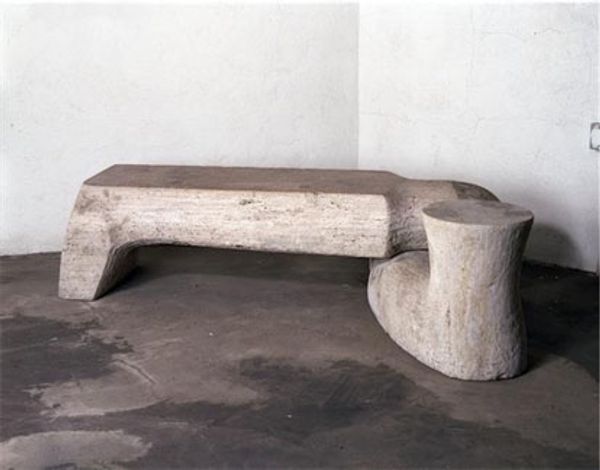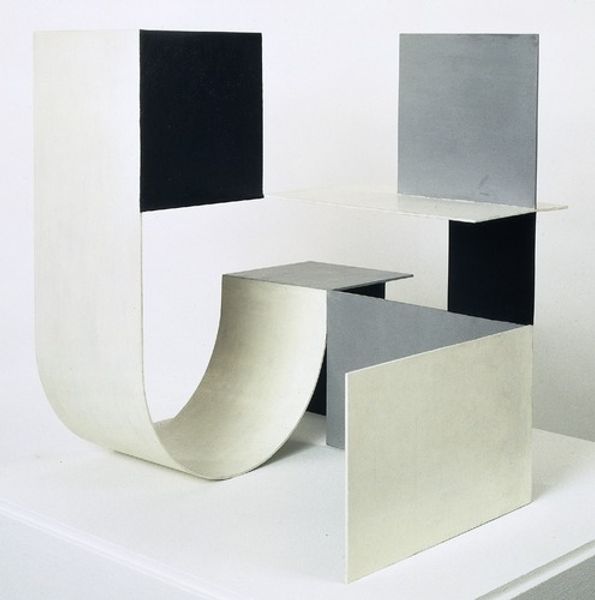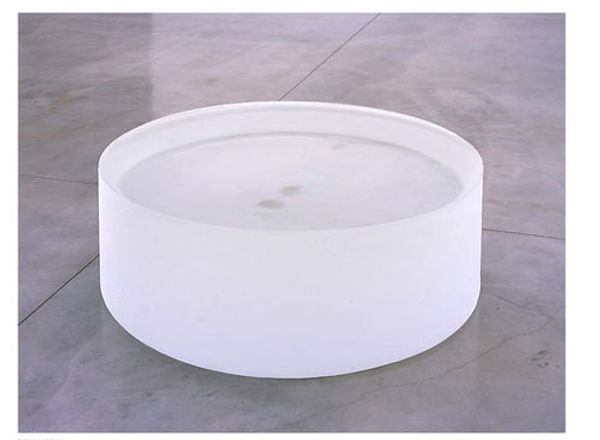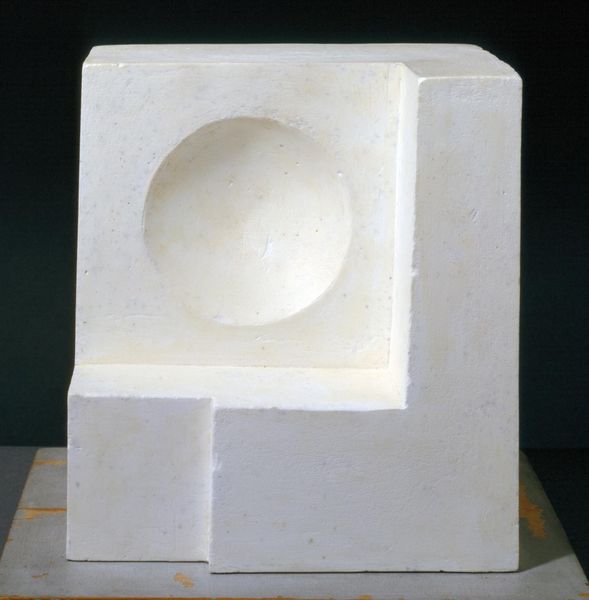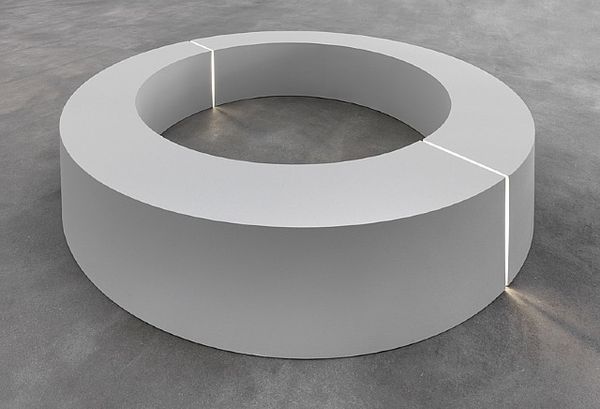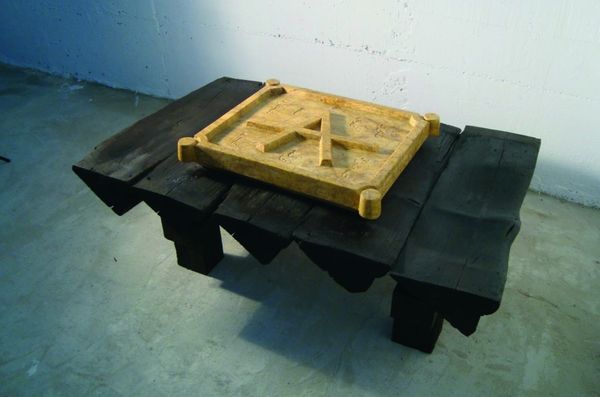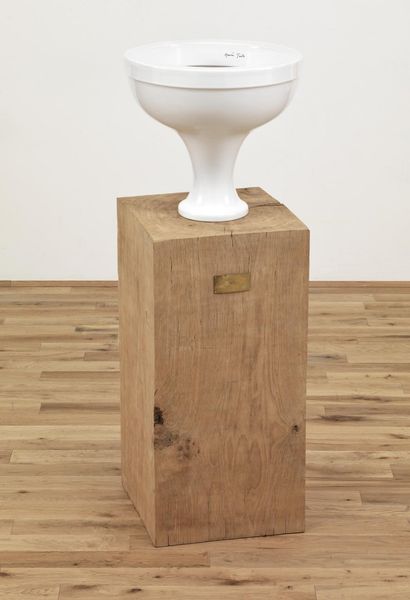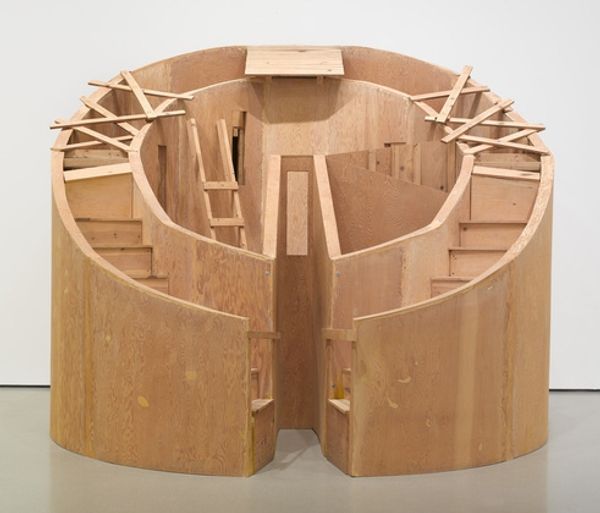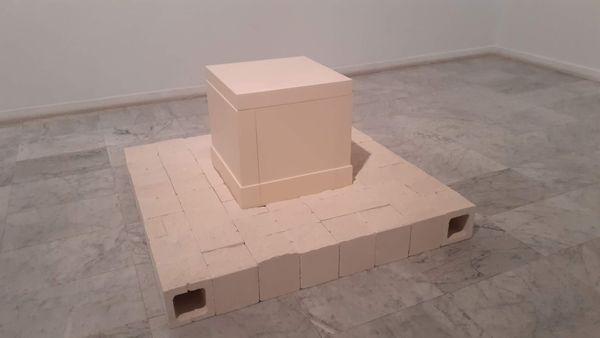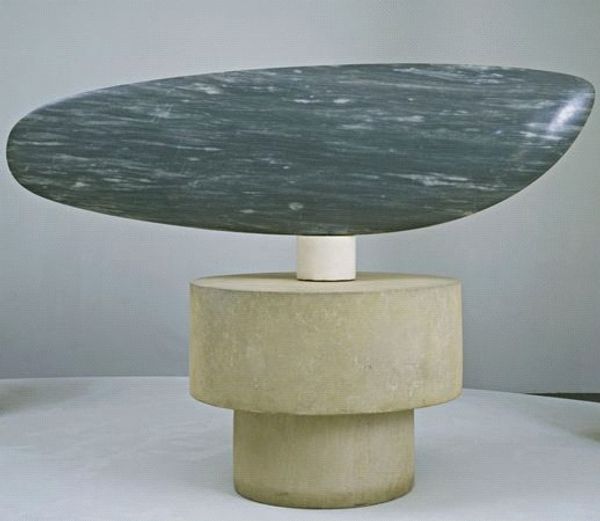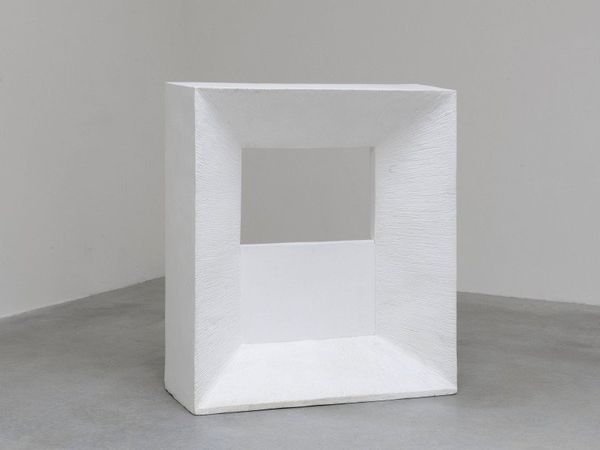
found-object, sculpture, wood
#
minimalism
#
found-object
#
geometric
#
sculpture
#
wood
#
modernism
Copyright: Noguchi Isamu,Fair Use
Editor: Here we have Isamu Noguchi's "The Mermaid's Grave," created in 1983 from wood. The sculpture has a kind of stillness to it, a geometric solemnity. What can you tell us about this work? Curator: The title is intriguing, isn’t it? “The Mermaid’s Grave” juxtaposes the organic, mythical creature with severe geometry and found object minimalism. Considering Noguchi’s Japanese-American identity and the period in which this was created, I see it speaking to issues of displacement, alienation, and even cultural erasure. How do you read the 'grave' aspect? Does it suggest a burial of cultural identity or tradition? Editor: That's an interesting idea! I was simply thinking about its form. A square base and then this perfect circle. Maybe the circle represents the mermaid and the square is the grave? Curator: Perhaps. But thinking about identity…who gets to define what that square or circle signifies? Noguchi's positionality is important. What was he burying? What parts of his heritage was he perhaps forced to suppress or leave behind, and how might this be related to cultural appropriation issues still resonant today? This work becomes a really powerful symbol. Editor: It makes me rethink minimalism in general. Curator: Precisely! It’s easy to see minimalist art as purely formal, but in whose interest does that separation serve? Examining art through an intersectional lens asks us to consider those histories, experiences, and power dynamics. Editor: I see. So, it’s not just about what’s in front of you but what has been deliberately excluded. Thank you! I'll definitely look at minimalist works in a new way now. Curator: My pleasure. Hopefully it empowers you to view every artwork critically.
Comments
No comments
Be the first to comment and join the conversation on the ultimate creative platform.
